Bagatelles
For the collective exhibition Astèr Atèrla, presented at Tour’s Centre de Création Contemporaine Olivier Debré, bringing together 34 artists from La Réunion, July 7, 2023, to January 7, 2024, curator Julie Crenn has invited Gabrielle Manglou to present a piece.
In an installation, the artist revisits the history of La Réunion through its absences, it’s trivialities and its fantoms. As if running an investigation, she’s been leading a long-term research project since 2017, HOC: Hypothèse de l’objet en creux (hollow object hypothesis). The archive of historical objects is fragile and rare in La Réunion. Few traces remain of daily life (domestic life, work, etc.), little remains to identify with.
Entitled Bagatelles 1 et 2 this installation pursues the HOC project with several pieces produced in 2018 for two parallel exhibitions: SIMILI at La Cité des Arts de Saint-Denis and PLACEBO, at the Archives Départementales de la Réunion (link to documents on the exhibitions).
Here, Gabrielle Manglou enlists elements like impressions of expressions: “autonomy: yes” and "autonomy: no"; hand-crafted books entitled Kit de survie en milieu postcolonial (survival kit for post-colonial environments); Petit traité d’Histoire dévorée, entendue, soupçonnée de l’île de La Réunion (short treatise on the devoured, overheard and suspected history of La Réunion; Outre-mer outrée (overseas in outrage); L’Esclavage vu sous un angle mou (weak viewpoint on slavery) and a death mask.
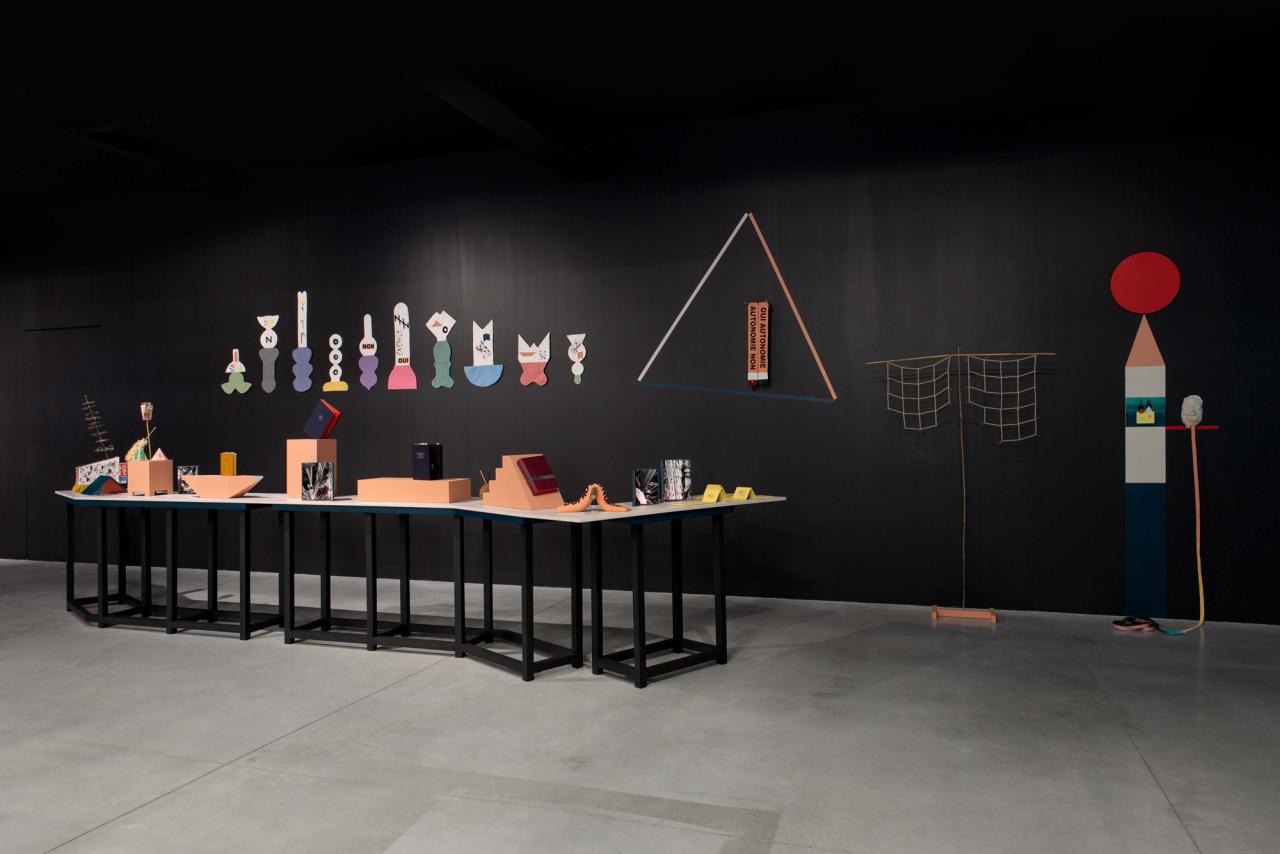
Photo of the exhibition, CCC OD Tours (from July 7, 2023, to January 1, 2024)
Photo: Margot Montigny
©Adagp, Paris
BACK TO THE HOLLOW OBJECT HYPOTHESIS
"In 2017, I learned about the 1761Tromelin shipwreck. The Utile, an India Company vessel (carrying victuals and slaves) ran aground on the 1-km-square Isle of Sand. The crew fled on a makeshift raft, but 80 escaped slaves remained on the island, creating a tiny village formed of necessity.
This story transformed my work as an artist: the knowledge of exiles, reports on archeological digs, the archeologists’ imaginaries, the relationship to time...Indeed, few objects embody the History of La Réunion. Archeology on the island is still in its infancy. The history of La Réunion is hollow, filled by imaginary spaces with multidirectional memories into which projected identities and genealogical fantasies are swallowed up. I thus decided to work on a long-term project entitled Hypothèse de l’objet en creux."
THE INSTALLATION
"In making installations, I take what I’m presenting as an image 3 into consideration; here objects are positioned like notes on a sheet of music.”
The point of departure for Bagatelles is an object made of bamboo and fabric: two salmon-colored strips with the words "Independence: no"4 screen printed on one and "Independence: yes"5 on another, at the end of each, there’s a red semi-circle for ‘no,’ and a green semi-cercle for ‘yes’ (with the simple idea of a traffic light: authorization or prohibition of passage). The two dominant colors chosen for the installation are salmon pink and an emerald green, a sort of muted declination."
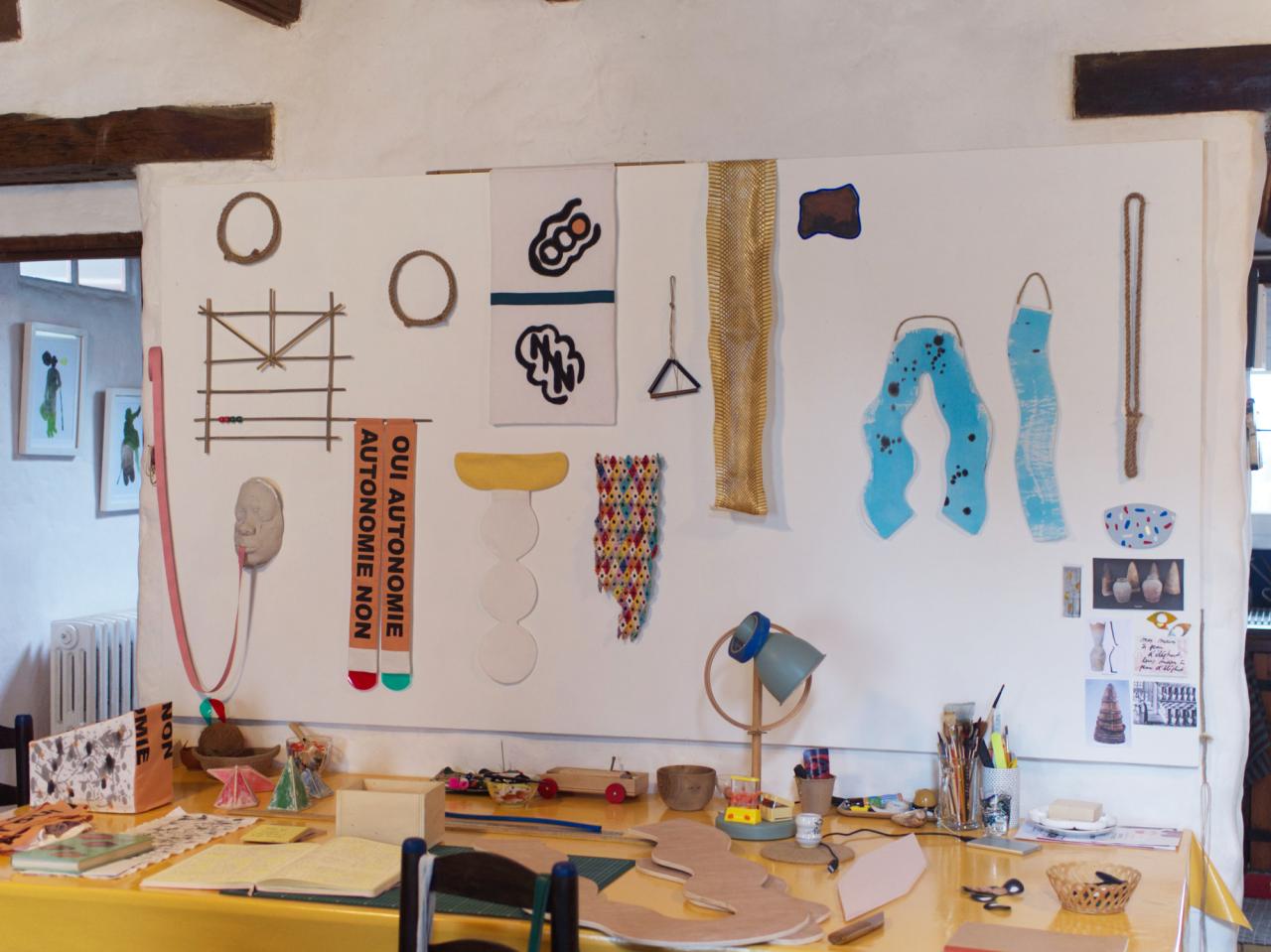
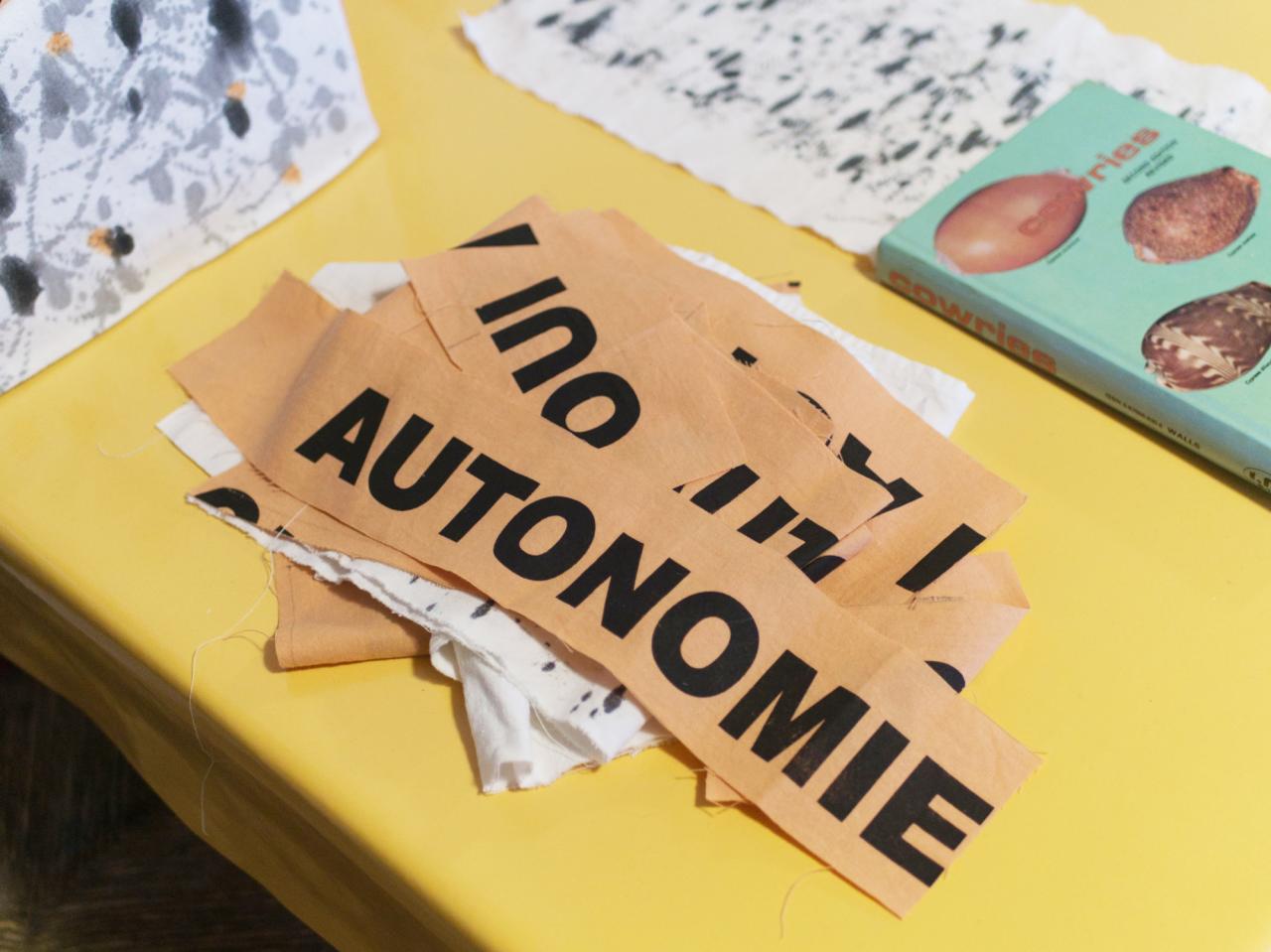
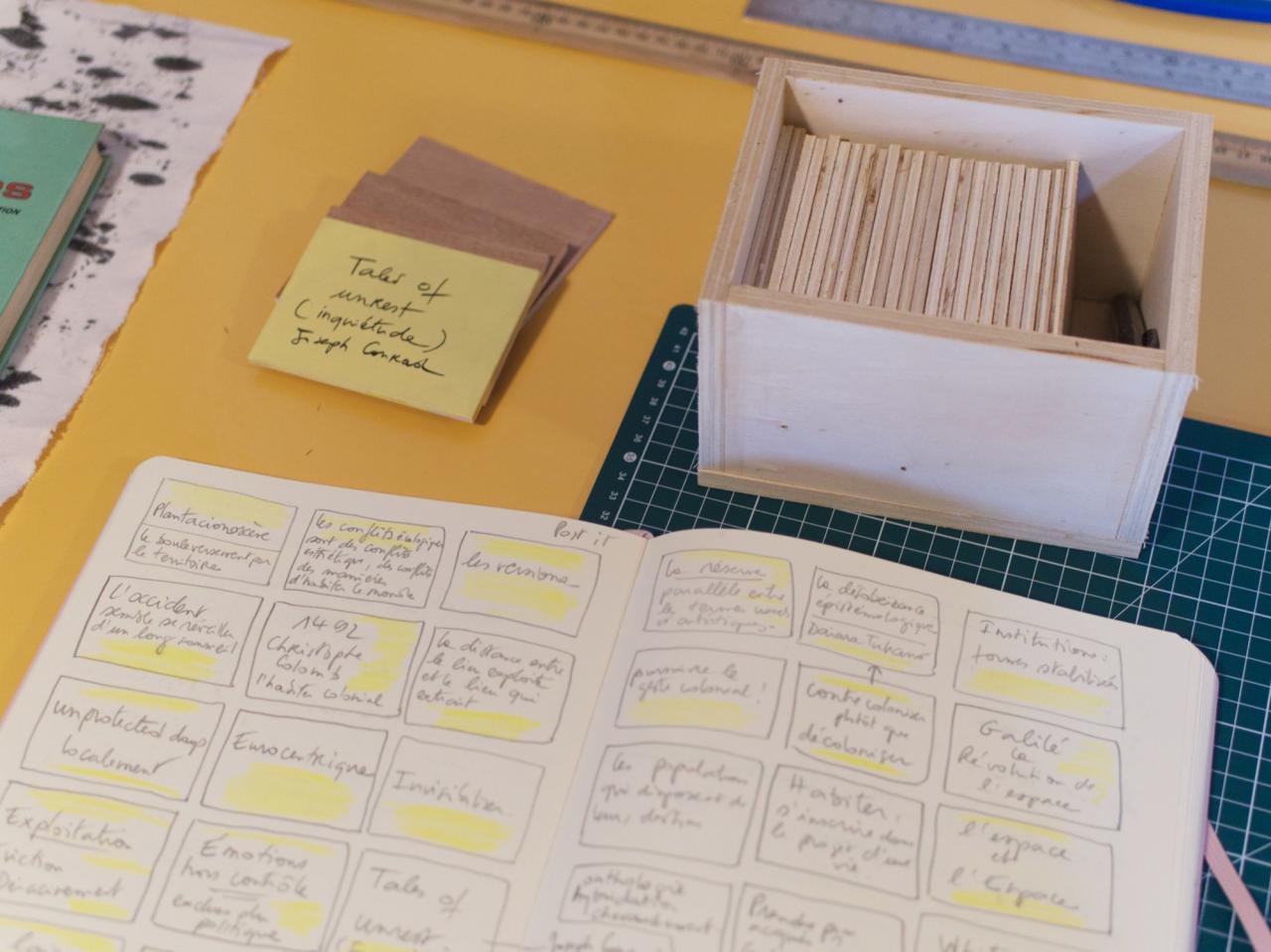
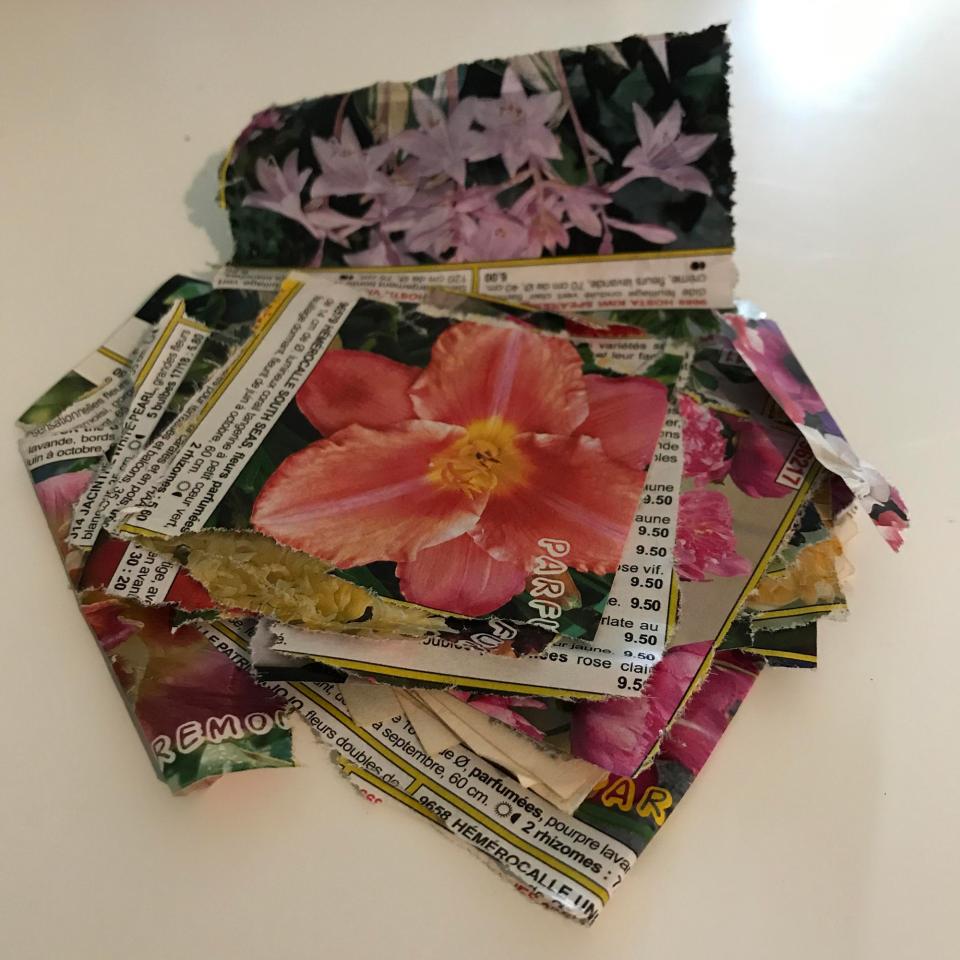
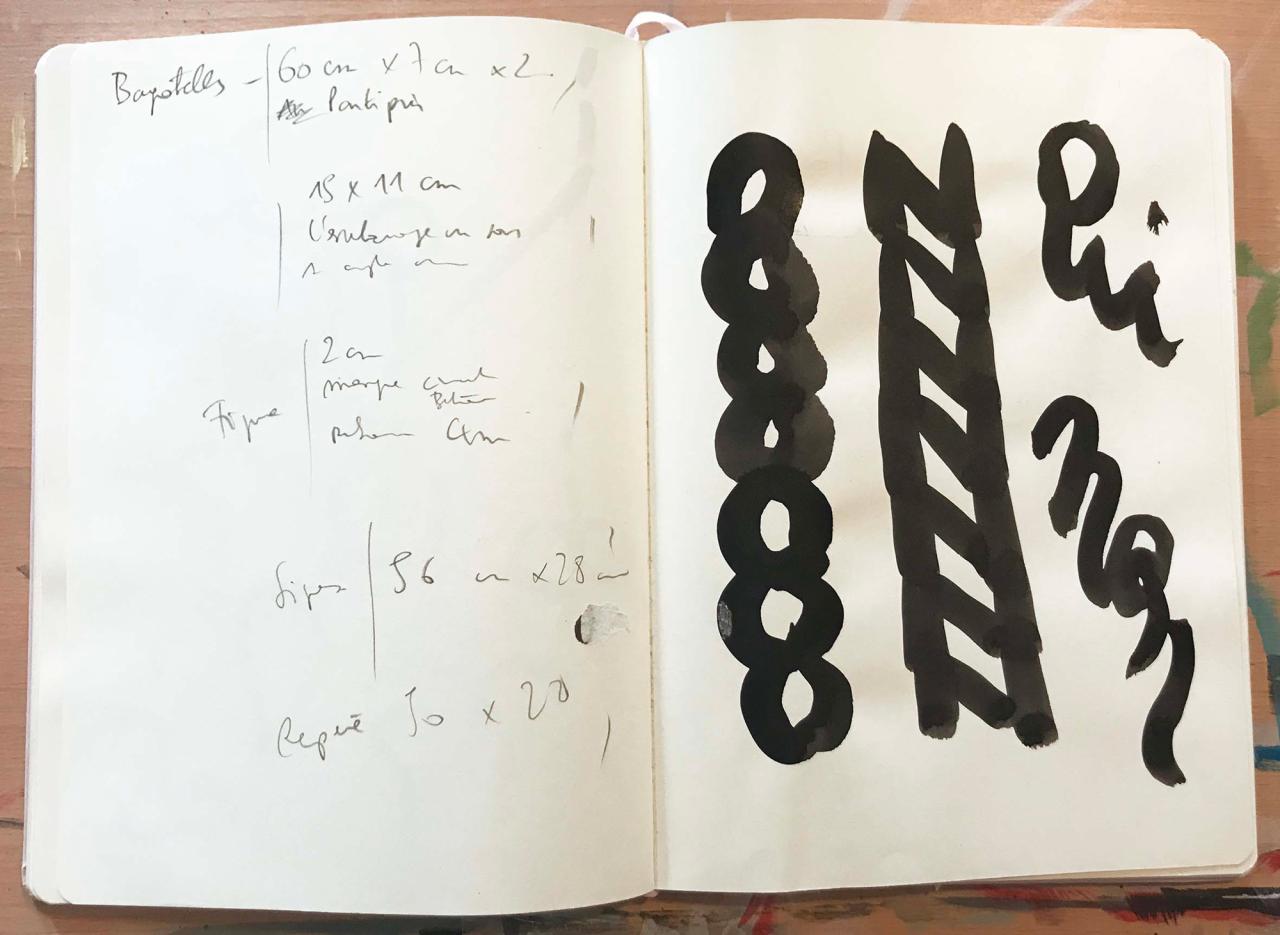
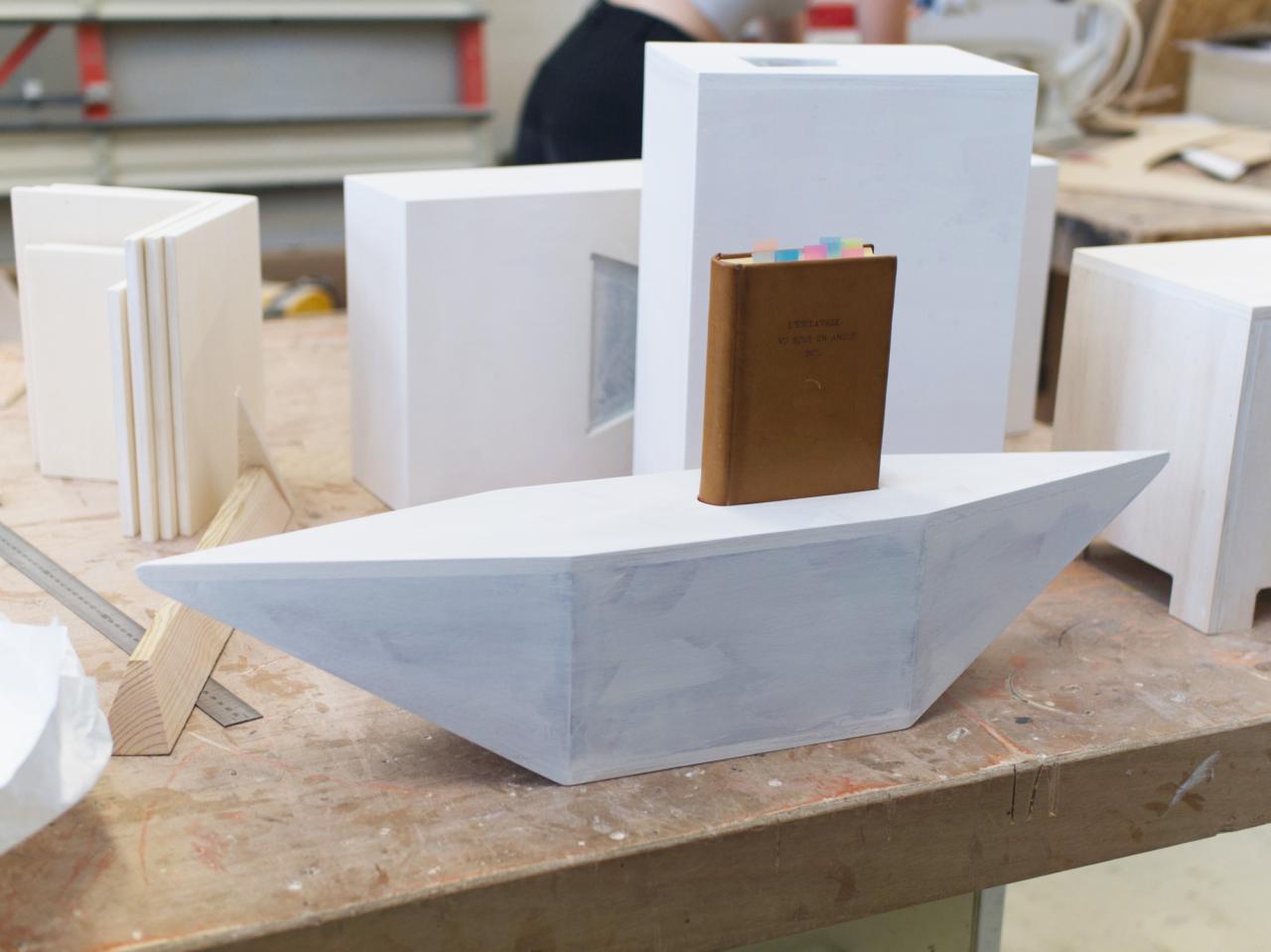

For the books, I built individual bases associated with each book that I produced in 2018, types of pedestal frames. The books are empty. Their titles are invitations to projection: Kit de survie en milieu postcolonial; Petit traité d’Histoire dévorée, entendue, soupçonnée de l’île de La Réunion; Outre-mer outrée and L’esclavage vu sous un angle mou.

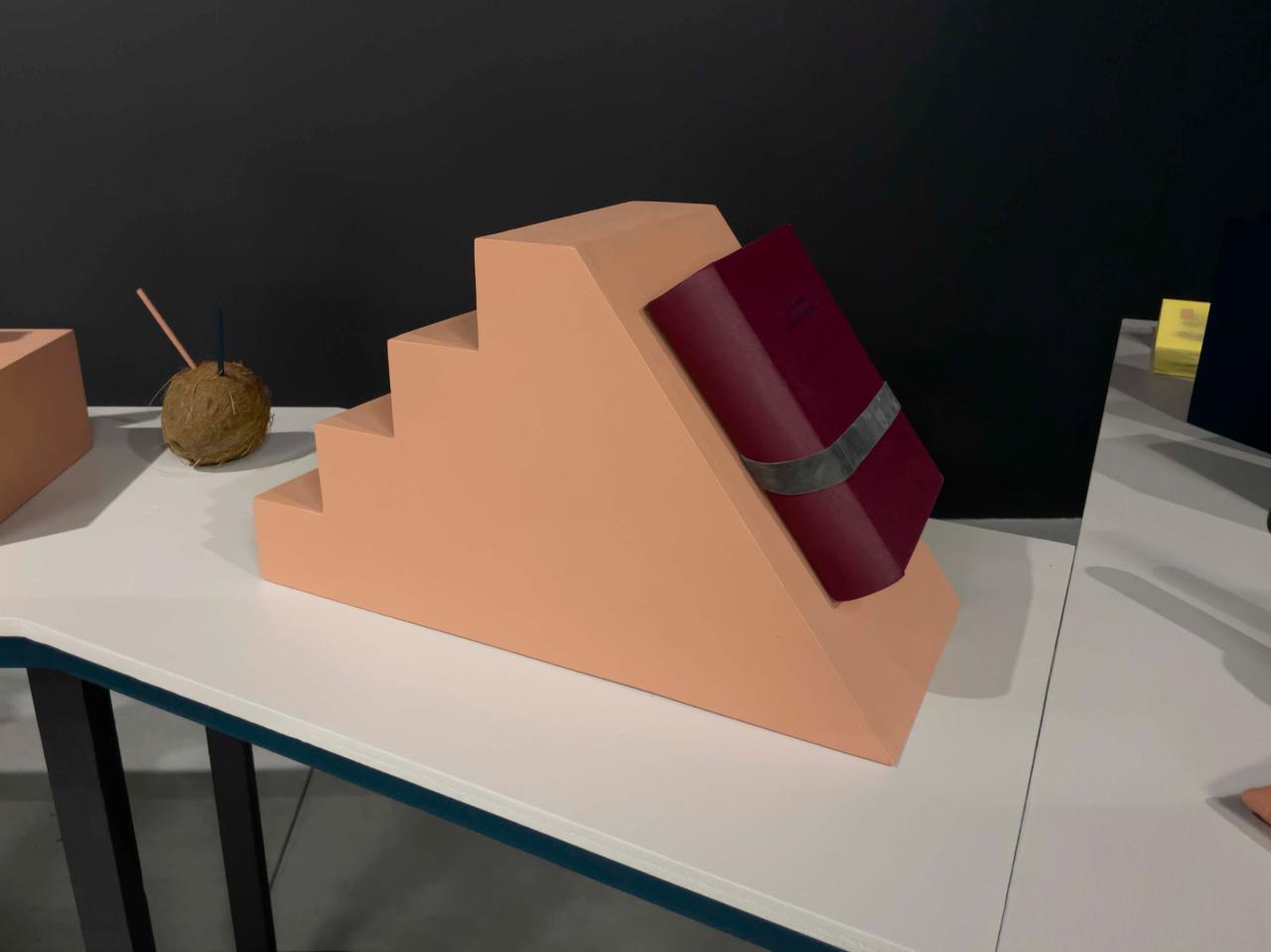
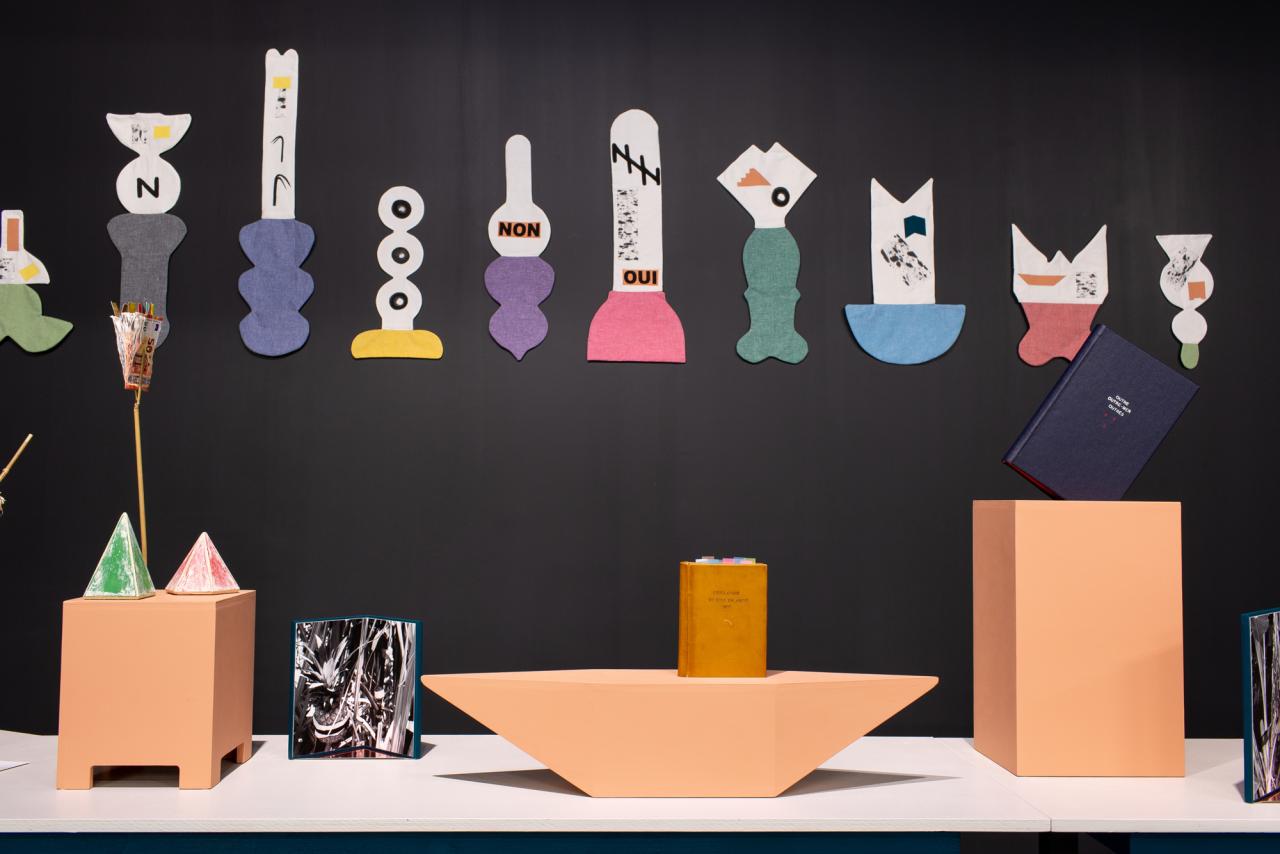
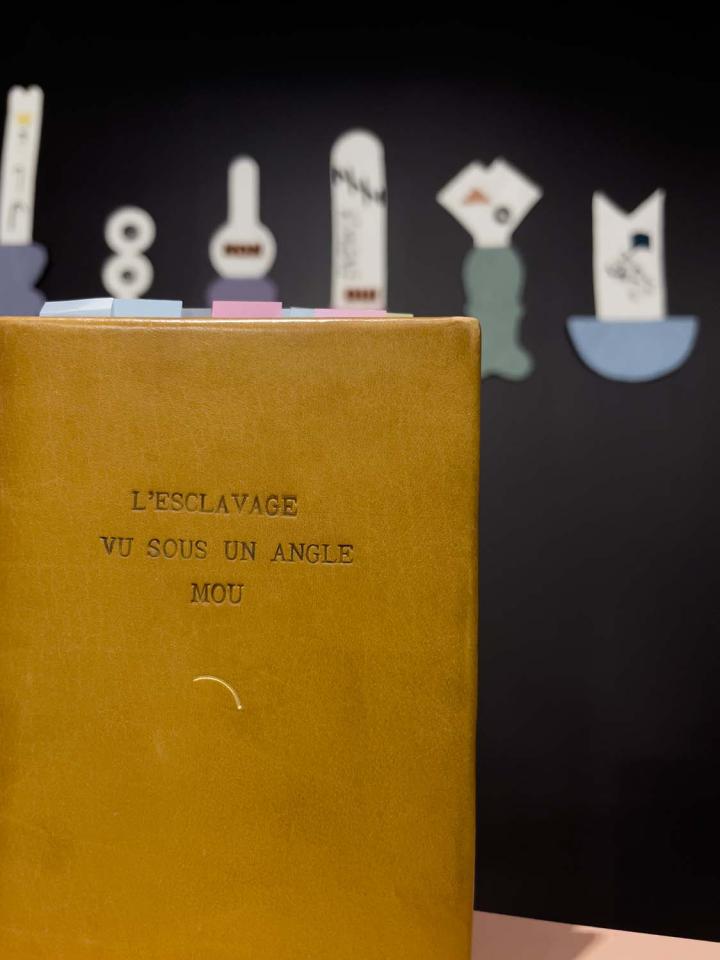
I also made wooden books with no titles whose covers are placed like rooftops on a house, the pages replaced by black and white photography of vegetables taped to sugar cane or banana plants.
The images are from the project entitled Polycultures spontanées (spontaneous polyculture, a critique of monocultures of sugar cane, a plant classified as neither fruit nor vegetable, directly or indirectly linked to diabetes and alcoholism).
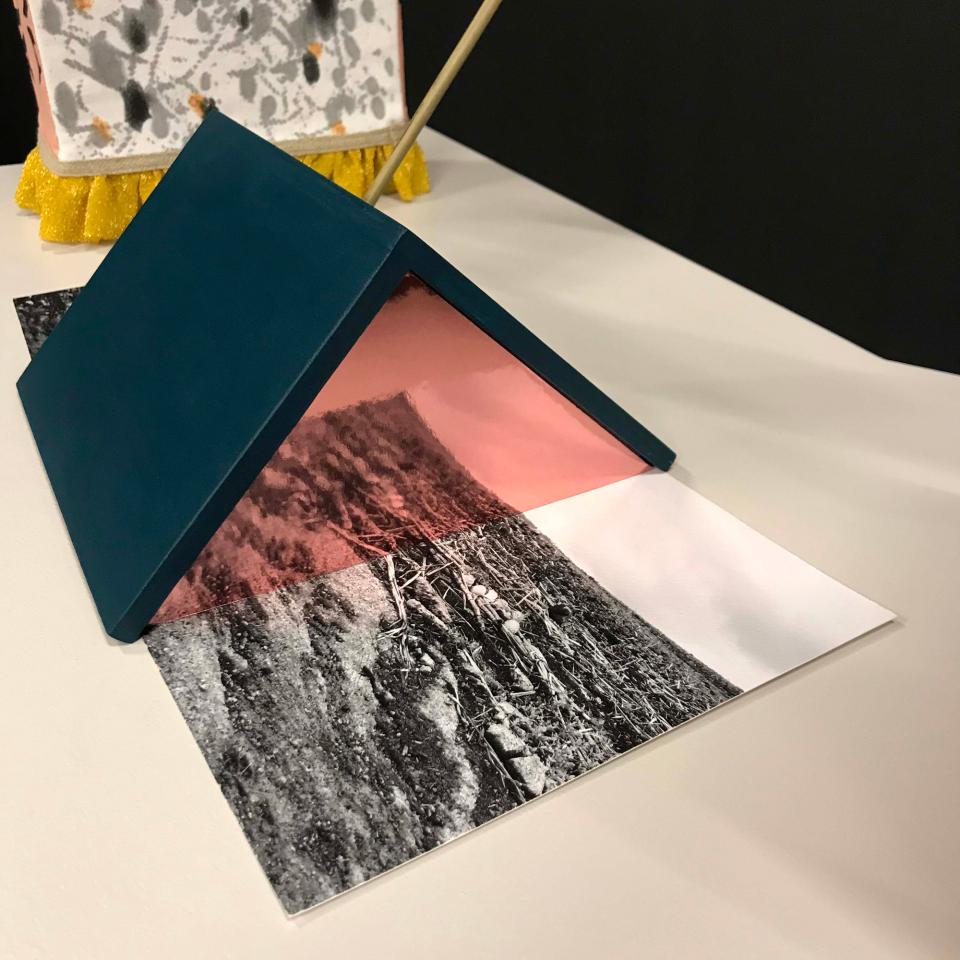
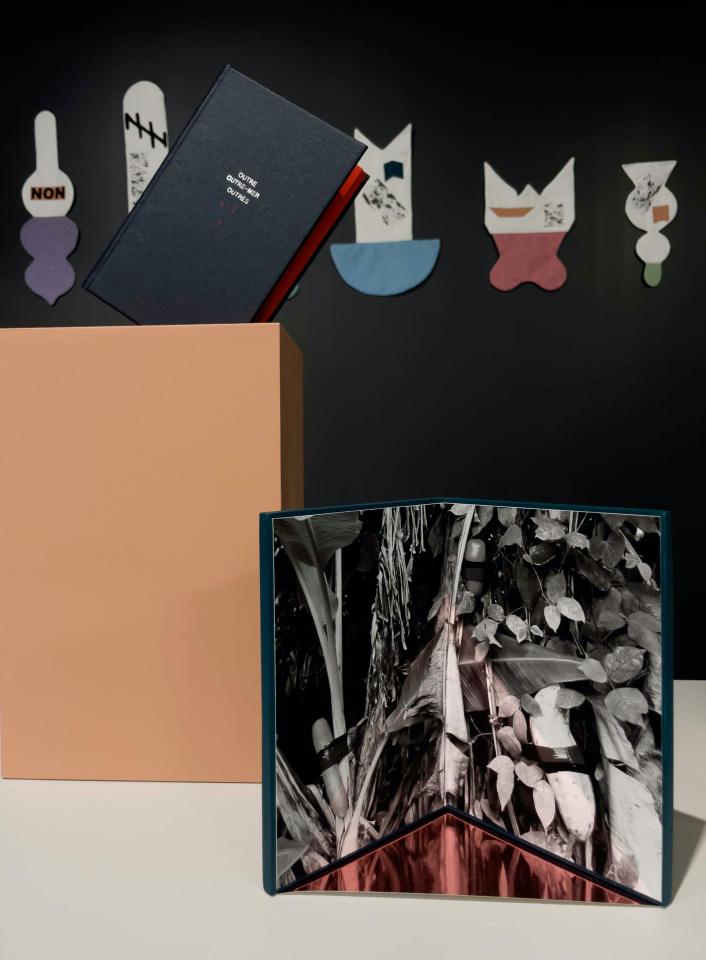
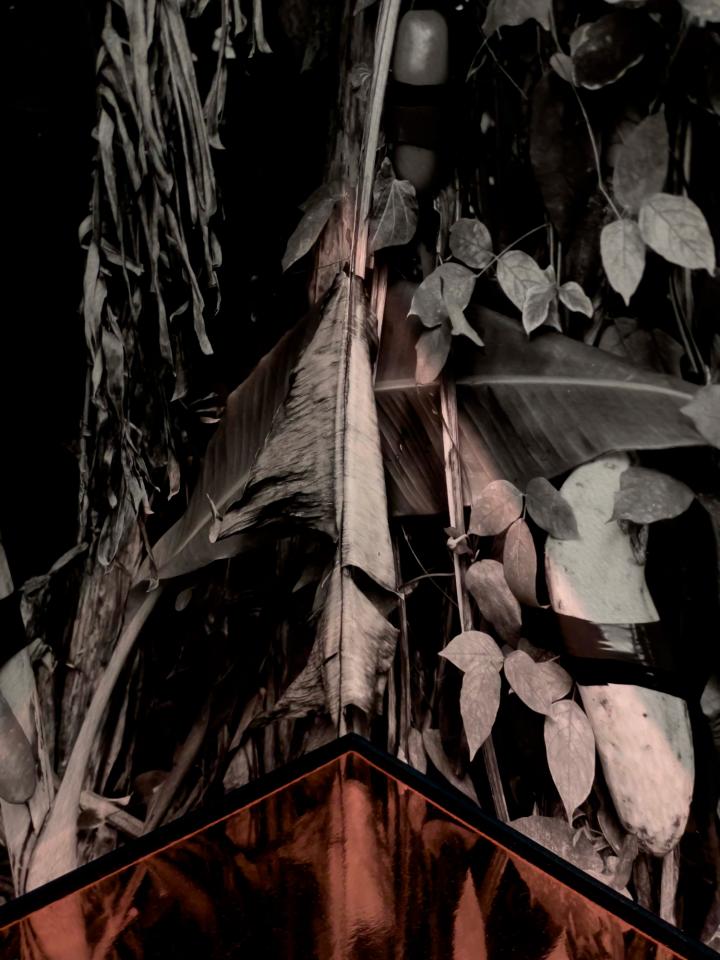
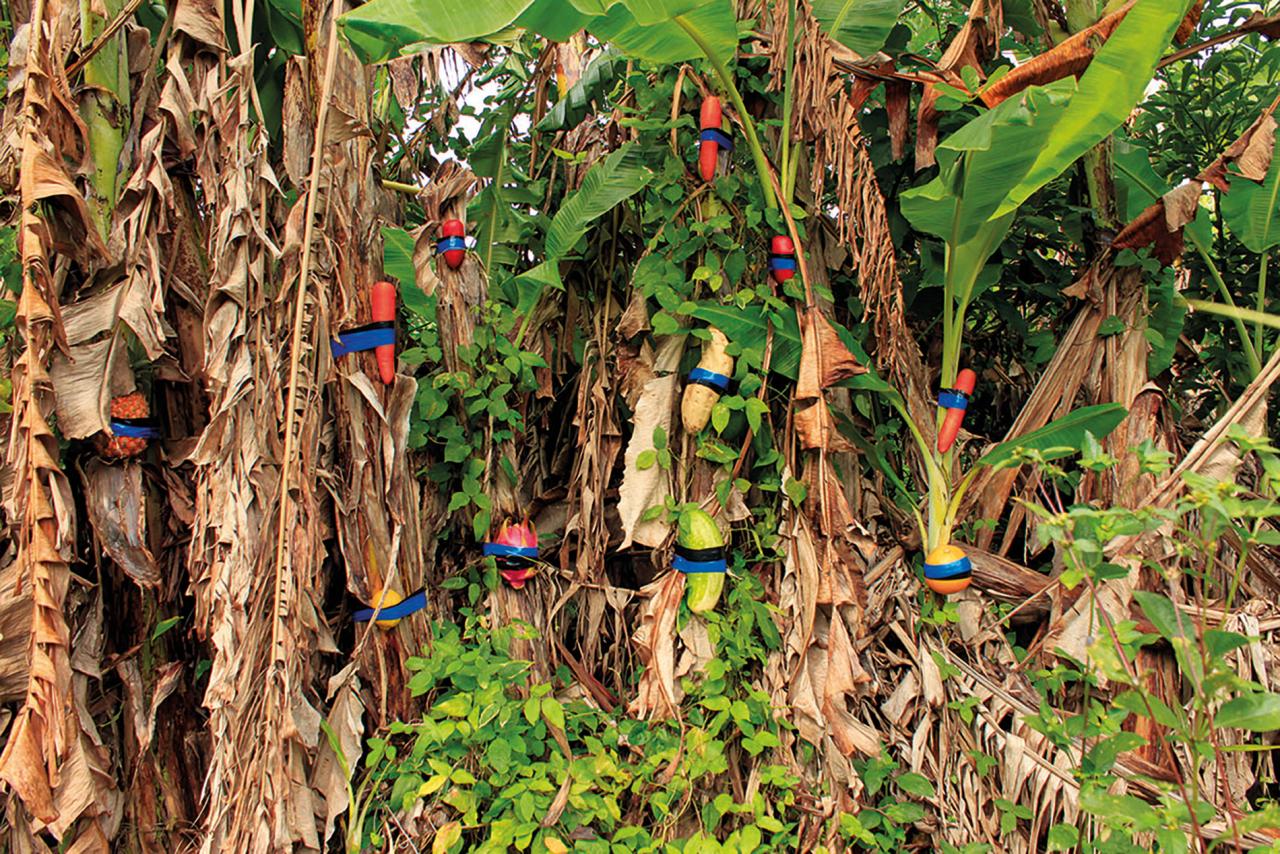
Here it’s a question of the in-between, vagueness come of allusion, intermediaries whose interpretation is necessarily unstable. A small marketplace of objects whose common thread links seemingly disparate items:
A large serpentine table is studded with model-like stylized pedestals beside magic accessories, homemade banderilles, flowers torn out of catalogues, pink reflections, geometric forms, books with evocative titles, trafficked photographs of fields of cane sugar and banana plants, coconuts and their cocktail straws, post-its in painted wood, bundles of fake bank notes and sugar cane in turned wood suspended by a sand weight bearing text...
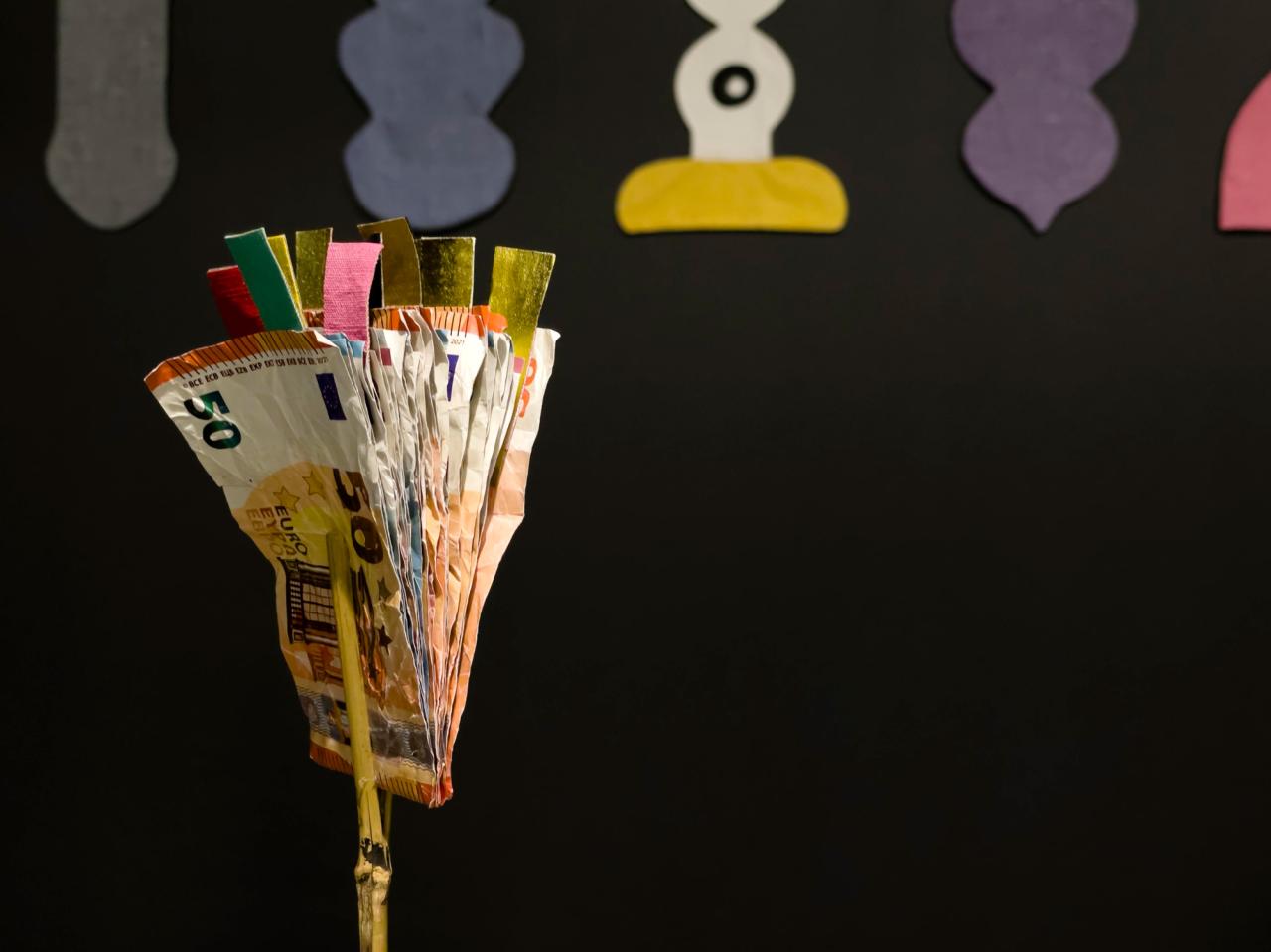
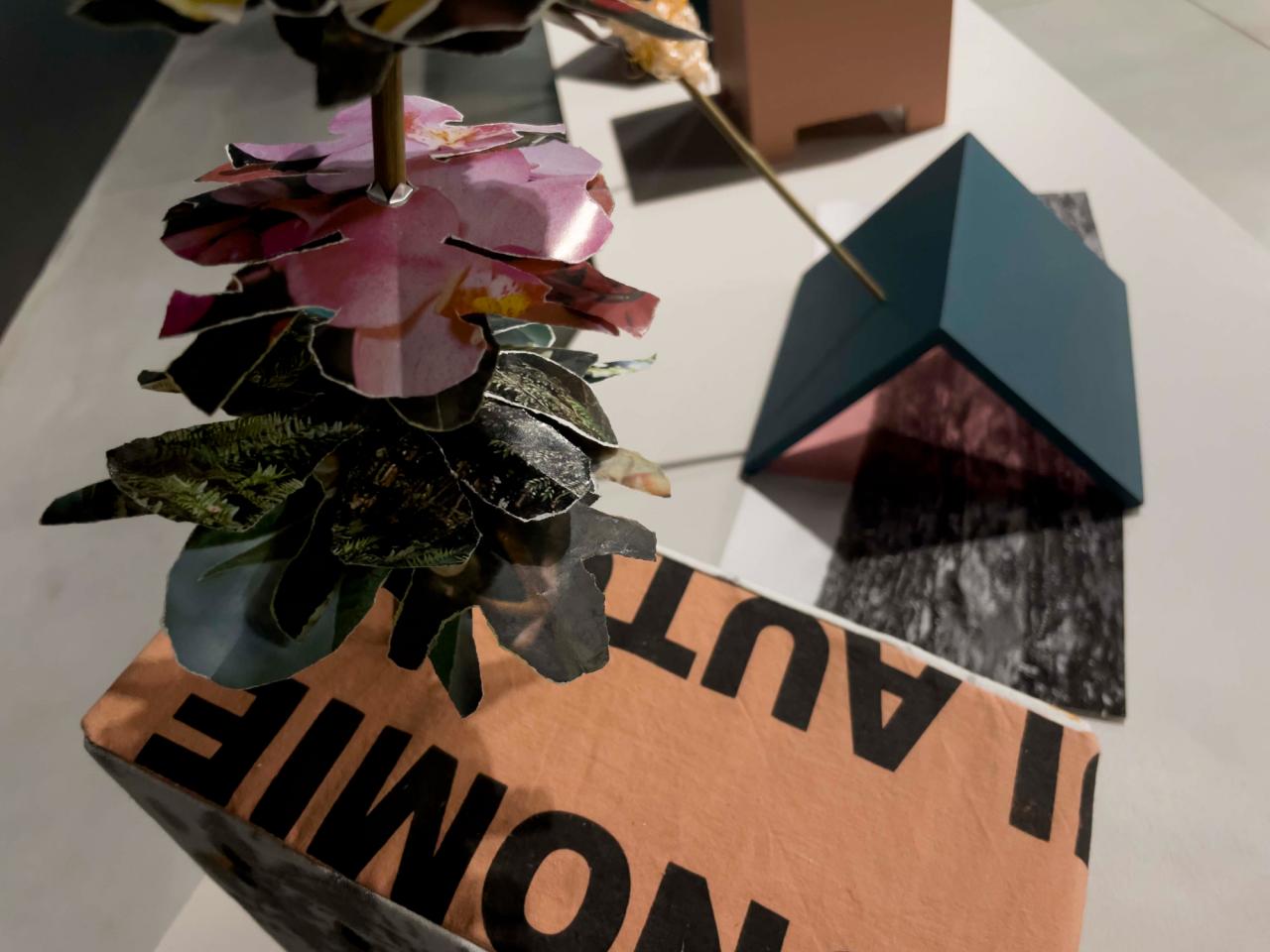
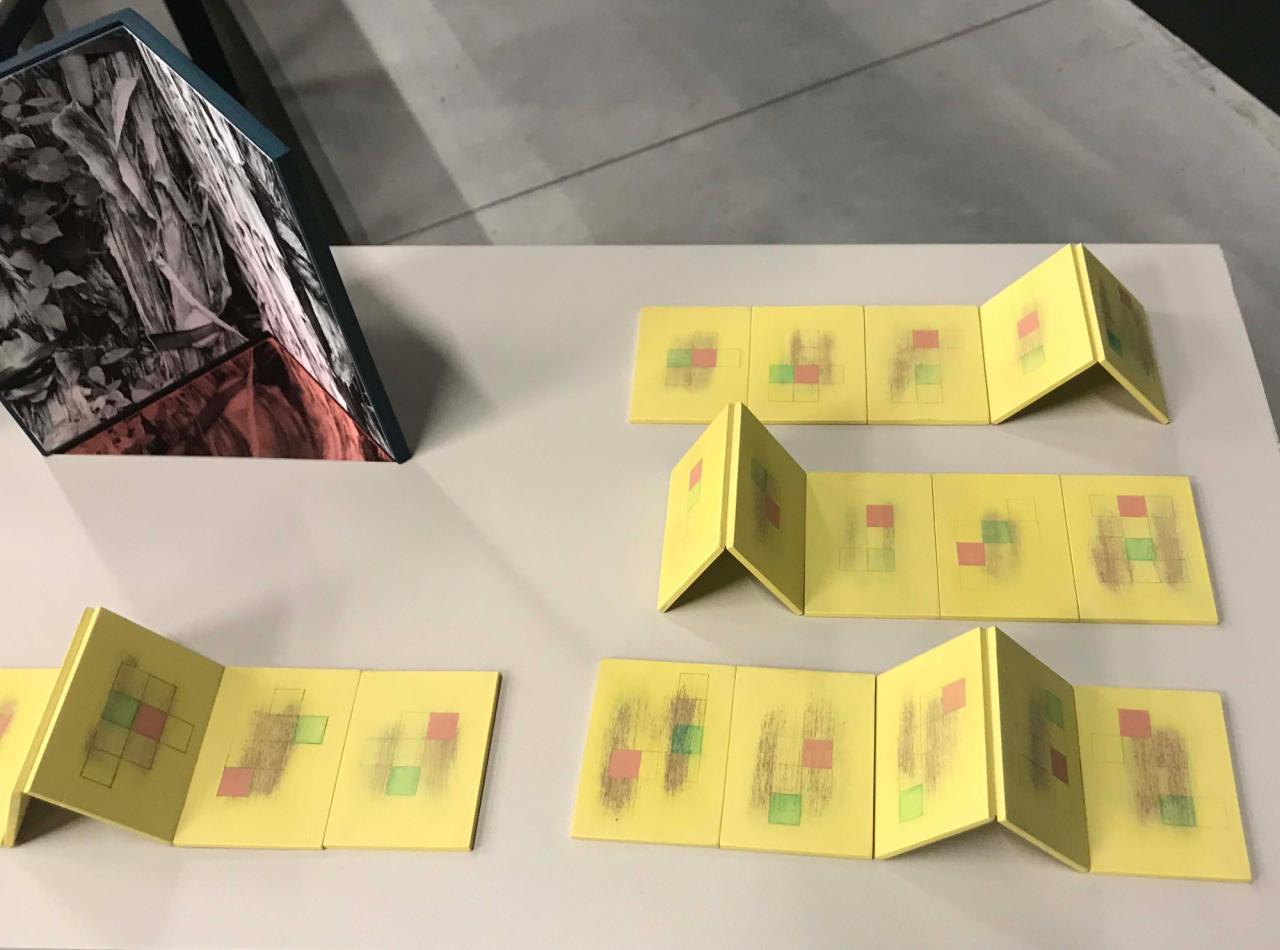
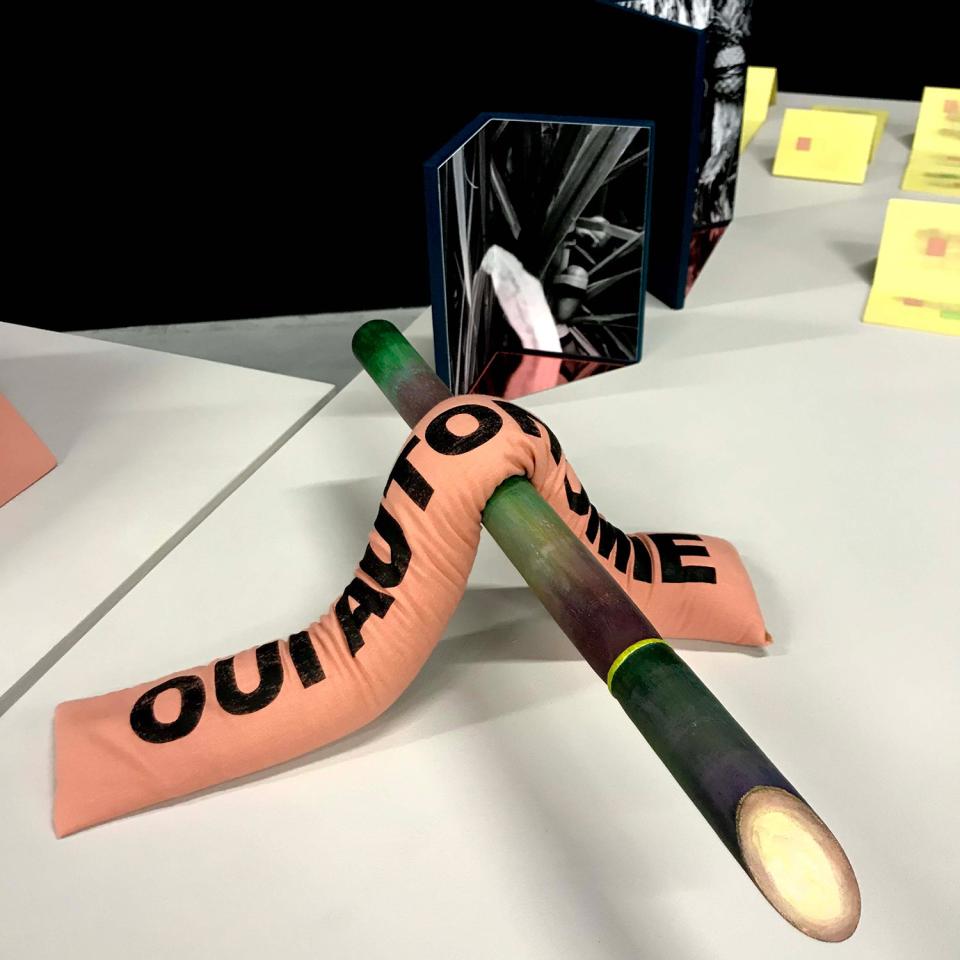
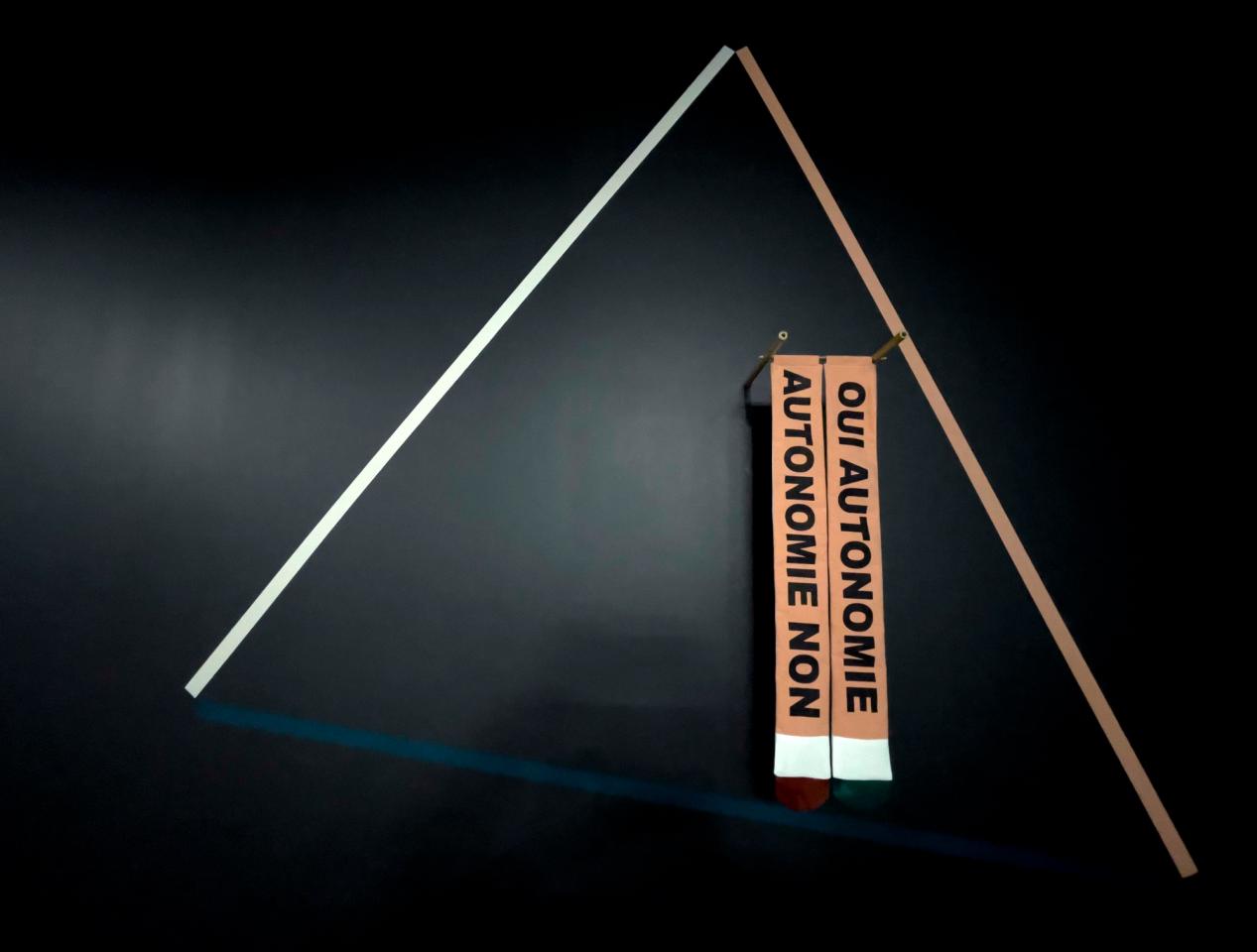
Behind the table: a line of totemic guardians or charms made of two-tone fabric onto which the words ‘yes’ and ‘no’ are sewn, as well as the signs ‘Y’ and ‘N’ (O and N), like alphabetic comet tails, with black paint on a white background like a Chinese painting, and some places showing a pattern of “television snow.”
To the right: a grid-like structure made of sugar cane waste, a burial post suggested by a death mask combined with geometric paintwork are like a mirage of staggered forms.
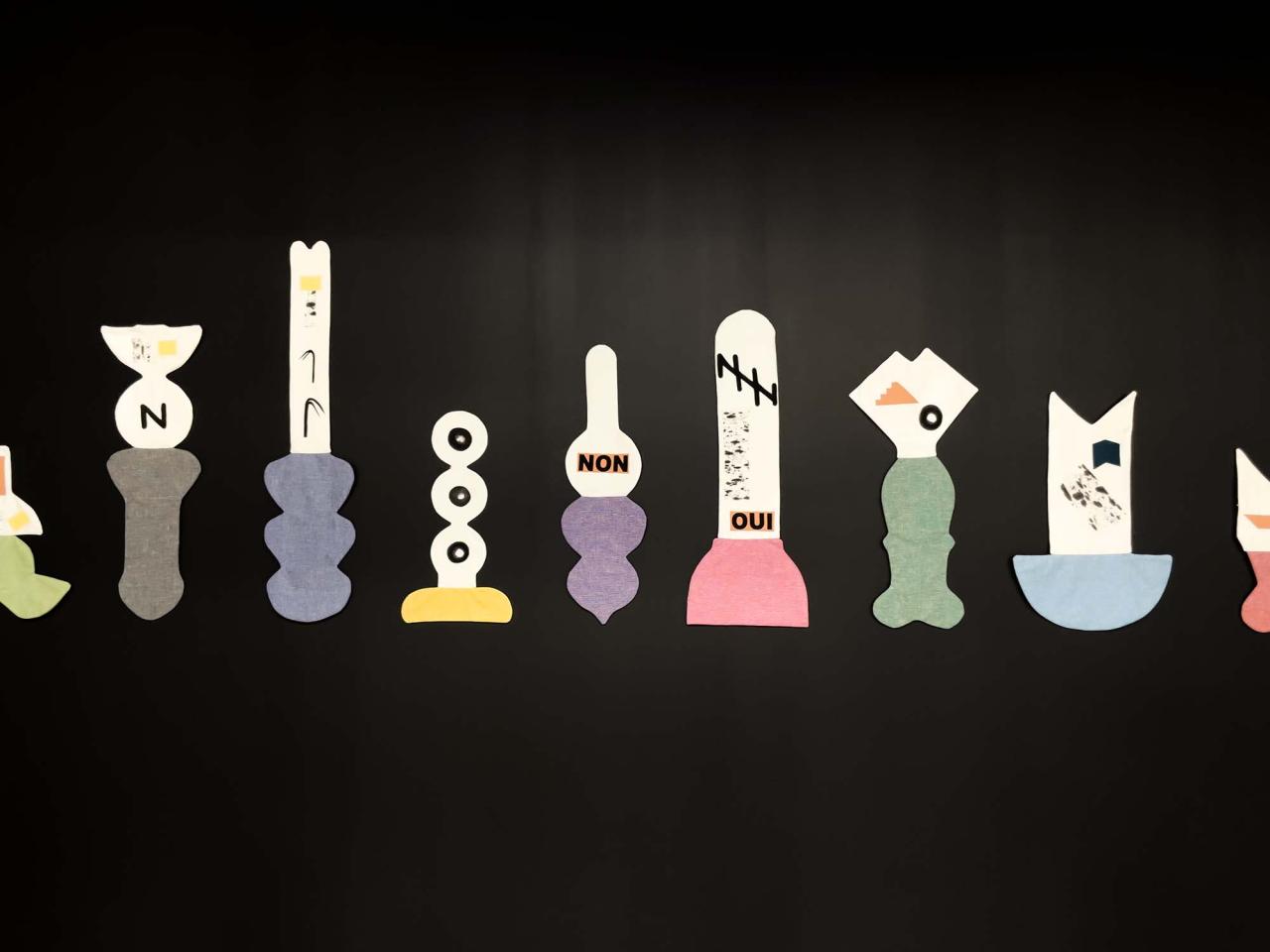
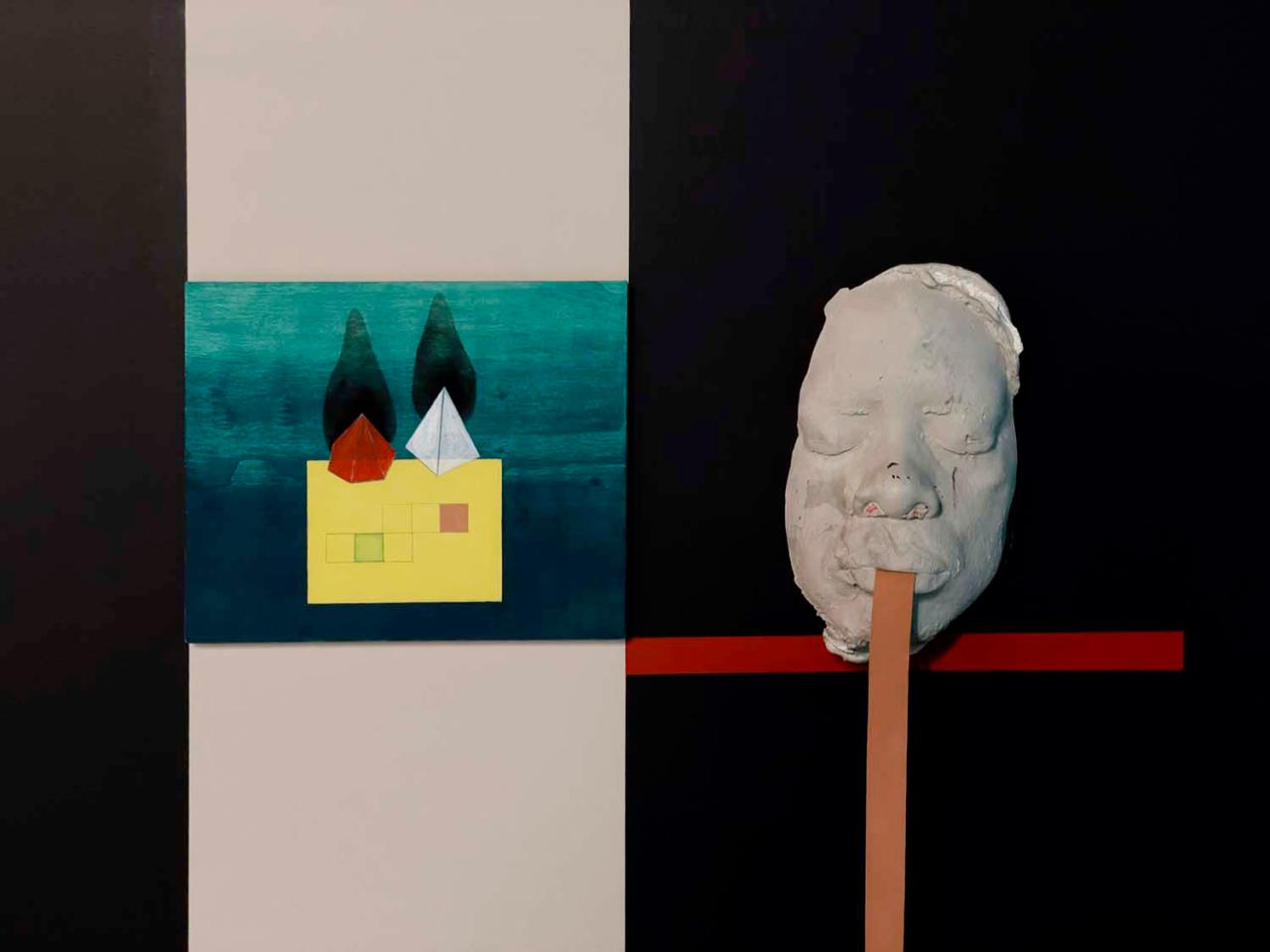
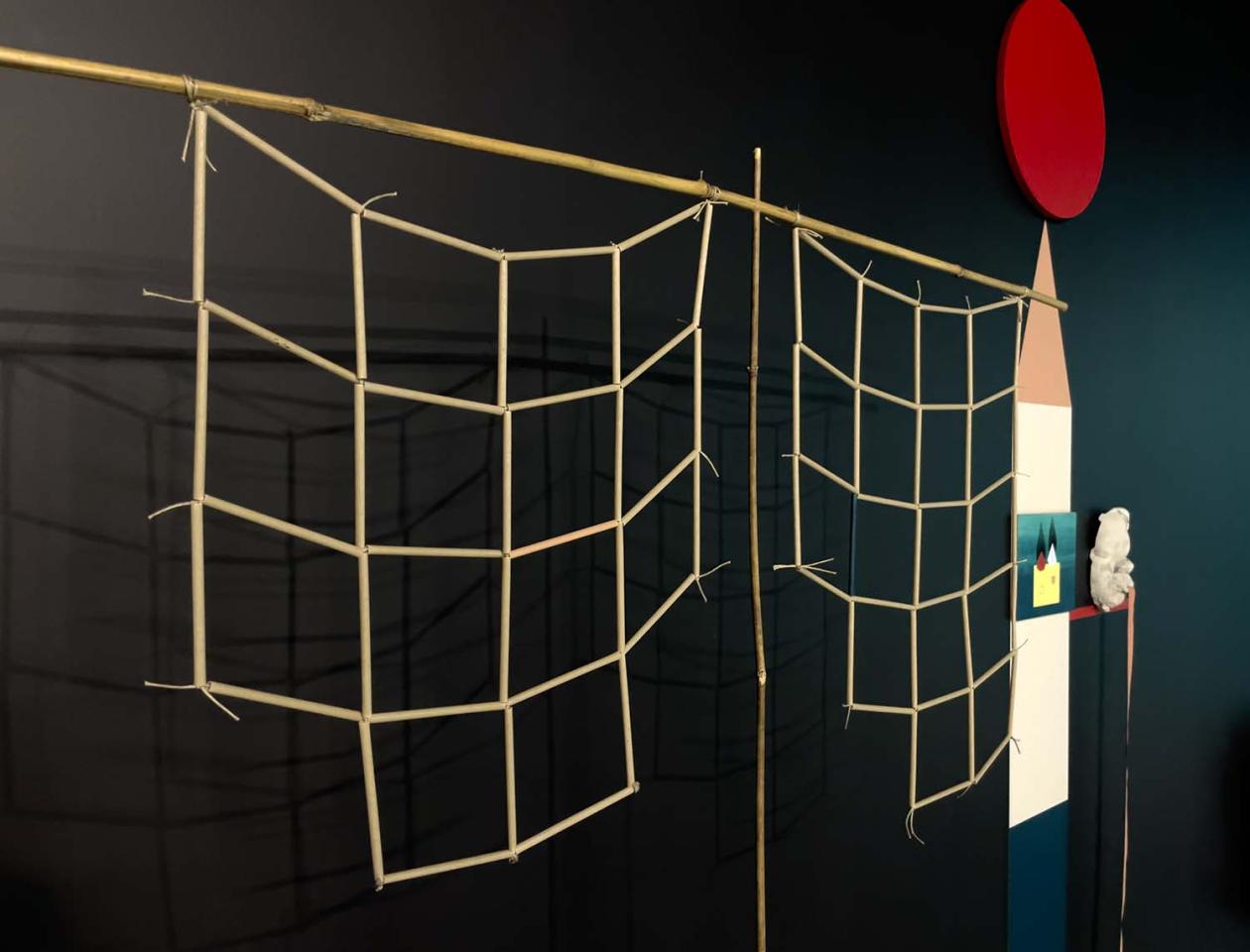
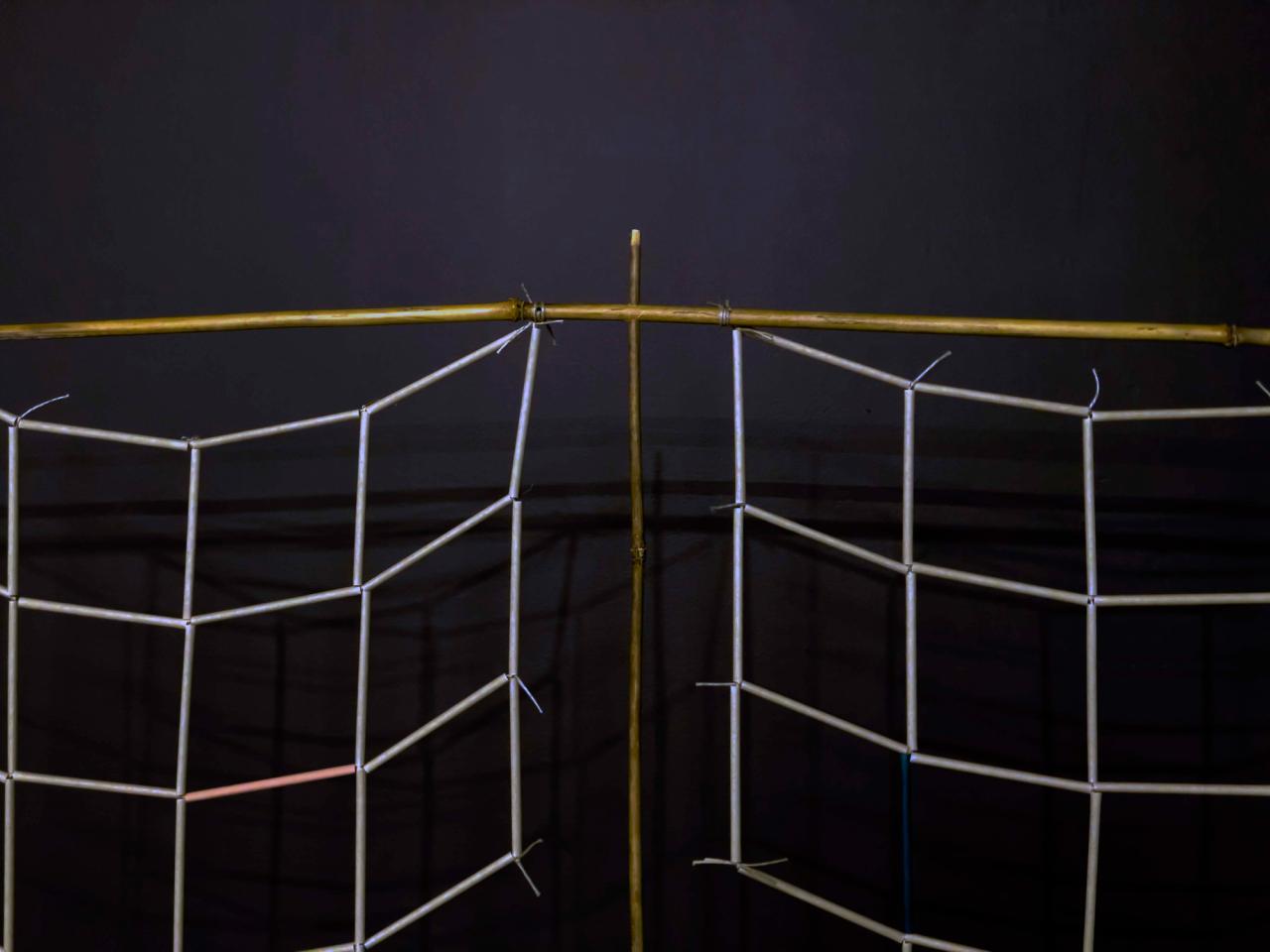
Often, the issue of overseas territories and questions related to the colonization of these territories are given a superficial treatment, hidden behind images of exotic paradise (with beaches, coconut trees, lascivious[EK1] women, sun-tanned skin, vacations, imposed Zen attitudes) or through caricatures of a type of alienation (e.g. "La Réunion is the Great Replacement..."; "welfare for breeders").
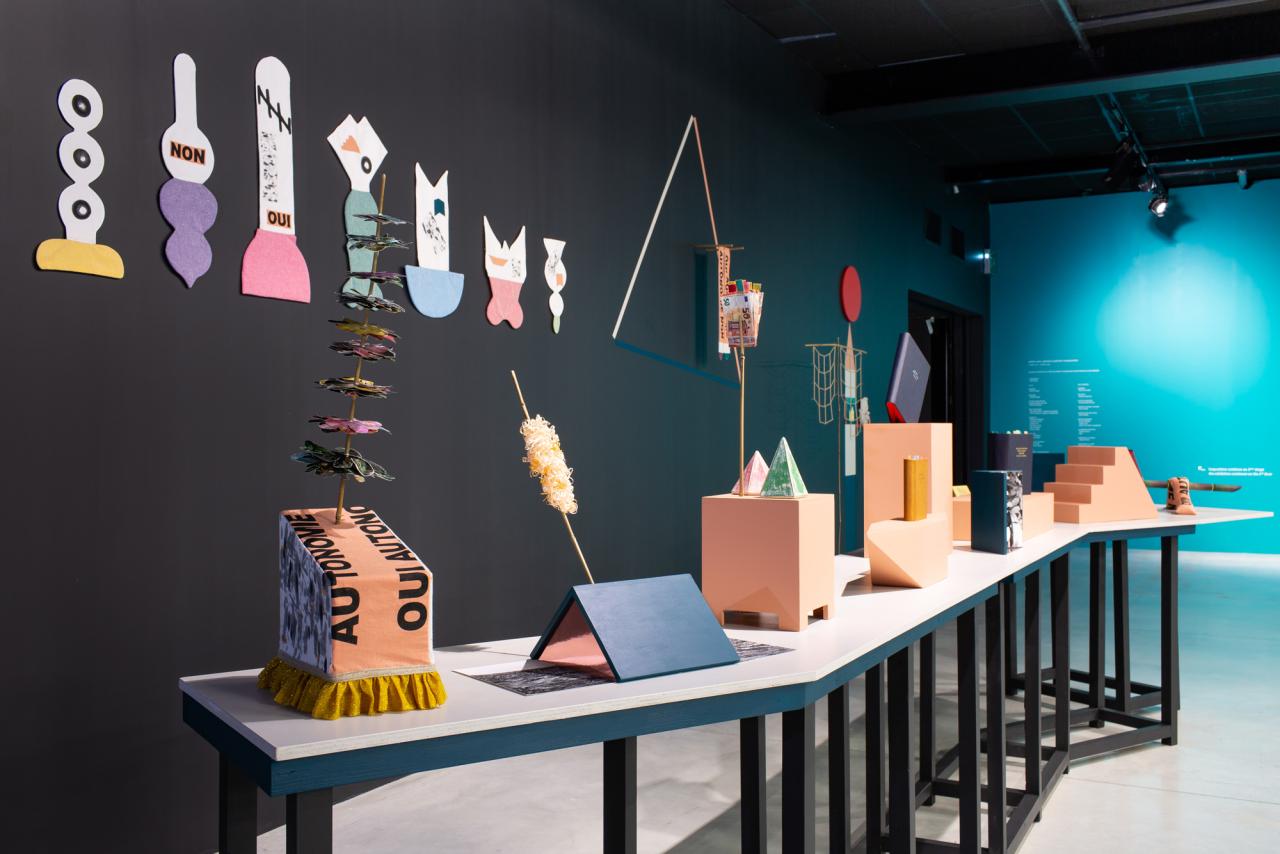
Bagatelles is an orgiastic feast of contradictory forms and signs; a long sentence purposely interspersed with clues. If still superficial, it remains a rather seductive read. If you linger over it, it promises to provoke genuine indigestion.
Notes :
1 Bagatelle: an object of little value or modest utility, a trinket/an act or word of minor importance.
2 In La Réunion, Bagatelle is a place name. Until 1980, the area was solely devoted to growing sugar cane and belonged to the Sucreries de Bourbon (a consumer brand for sugar products in La Réunion). Many agricultural laborers broke their backs cutting sugar cane under the rain, in the wind, with the sun beating down on them. From these conditions remains a mentality of “making do with what you have”. Growth in the area dates back to the 1980s, with development projects planned by mayor Lucet Langenier. The first social housing complex was built, then other buildings rose up, steadily encroaching upon the fields of sugar cane. Starting in 1997, the area became a true town and high priority neighborhood.
Bagatelle is also the start of many paths leading to reservoirs with lovely waterfalls.
3 Image: a tangible representation of a being or a thing (tangible in an incomplete, imprecise sense, subject to interpretation).
4 et 5 The 1960s-1970s were also rich in debate and political disputes over the island’s status (as either a department or an autonomous entity) fueled by two central figures: Michel Debré and Paul Vergès. The former, a Prime Minister, deputy in 1963, defended departmentalization; the latter, founder of the Communist Party of La Réunion (P.C.R.) in 1959, was for the island’s autonomy.
ACKNOWLEDGEMENTS
Gabrielle Manglou would like to thank Christian and Norbert Bertille at the Archives Départementales de la Réunion, in particular, and EESAB, Lorient and Alexis Baudet at the wood workshop for their collaboration.
Translation: Elaine Krikorian